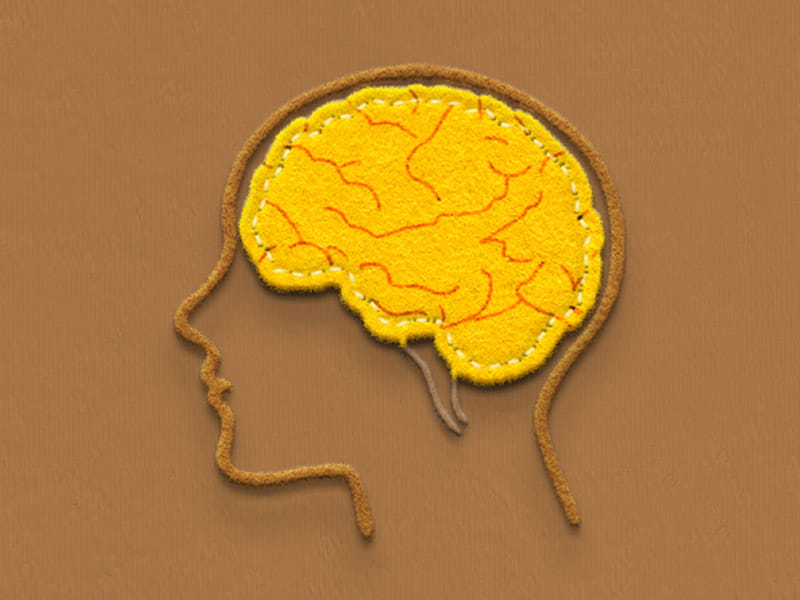Updated guidelines rethink care for people with bleeding stroke
By American Heart Association News

Updated guidelines on intracerebral hemorrhages – also known as bleeding strokes – say many techniques widely considered standard care aren't necessary for people who have this less common but dangerous type of stroke.
The revised guidelines from the American Heart Association/American Stroke Association, published Tuesday in the journal Stroke, include recommendations that cover all aspects of care, from surgical techniques to compression socks. The guidelines, last revised in 2015, also emphasize support and training for home caregivers.
"We believe the wide range of knowledge set forth in the new guideline will translate into meaningful improvements" in care, said Dr. Steven M. Greenberg, chair of the group that wrote the update.
Intracerebral hemorrhages account for about 10% of the nearly 800,000 strokes that occur annually in the United States. It is one of the deadliest types of stroke, with a 30%-40% death rate.
"There is no easy path to preventing or curing bleeding strokes, yet there is encouraging progress across all aspects of this disease, from prevention to in-hospital treatment and post-hospital recovery," said Greenberg, a professor of neurology at Harvard Medical School and vice chair of neurology at Massachusetts General Hospital, both in Boston.
Primary intracerebral hemorrhage is distinct from brain hemorrhages caused by outside factors, such as trauma. Typical causes include uncontrolled high blood pressure and age-related degeneration of the brain's blood vessels. The condition affects Black and Hispanic people at disproportionately high rates.
The likelihood increases sharply with age, so such strokes are expected to remain a significant health concern as the population ages.
The new guidelines cite studies showing that:
‒ minimally invasive surgical procedures may be useful in treating some bleeding strokes.
‒ anti-seizure medicines and antidepressants don't seem to help overall health unless a patient already was having seizures or depression. Anti-seizure medication did not contribute to improvements in functionality or long-term seizure control, and antidepressants increased the chance of bone fractures.
‒ administering steroids to prevent complications from a bleeding stroke is ineffective.
‒ platelet transfusions, unless used during emergency surgery, may worsen a stroke survivor's condition.
‒ wearing compression socks or stockings to prevent dangerous blood clots after a bleeding stroke is not effective. Wrapping the lower legs and feet in inflatable boots may be helpful if started on the same day a bleeding stroke is diagnosed.
"This is an area where we still have a lot of exploration to do," Greenberg said. "It is unclear whether even specialized compression devices reduce the risks of deep vein thrombosis or improve the overall health of people with a brain bleed. Even more research is needed on how new blood clot prevention medications may help, especially within the first 24 to 48 hours of the first symptoms."
People with a bleeding stroke may have increased pressure in the brain after the bleed, which can damage brain tissue. These people should be considered candidates for immediate surgical procedures to relieve the pressure.
"The evidence is now reasonably strong that minimally invasive surgery may improve the likelihood that a patient will survive following a moderate or large" intracerebral hemorrhage, Greenberg said. It is less clear whether any kind of surgical procedure improves the chances of survival and recovery, "which are our ultimate goals."
Because blood thinners may increase complications and death, the update provides advice on immediate reversal of those medications.
The guidelines also recommend education, practical support and training for family members so they know what to expect during rehabilitation.
Education for caregivers has been shown to improve a stroke survivor's activity levels and quality of life. Practical support, such as how to walk safely with the patient, and training may make performing some rehabilitation exercises at home feasible and improve patients' standing balance.
"People need additional help with these lifestyle changes, whether it's moving around more, curbing their alcohol use or eating healthier foods," Greenberg said. "This all happens after they leave the hospital, and we need to be sure we are empowering families with the information they may need to be properly supportive."
The guidelines reinforce the importance of having a multidisciplinary team develop a plan for recovery.
The authors also recommend the development of regional health care systems that can provide immediate care for bleeding strokes and can quickly transfer people to facilities with neurocritical care and neurosurgical units.
The guidelines outline several areas for future study, including how soon people can return to working, driving and participating in other social engagements. Health care professionals also need more information on recommendations for safe levels of exercise and sexual activity, the guidelines said.
If you have questions or comments about this American Heart Association News story, please email [email protected].





